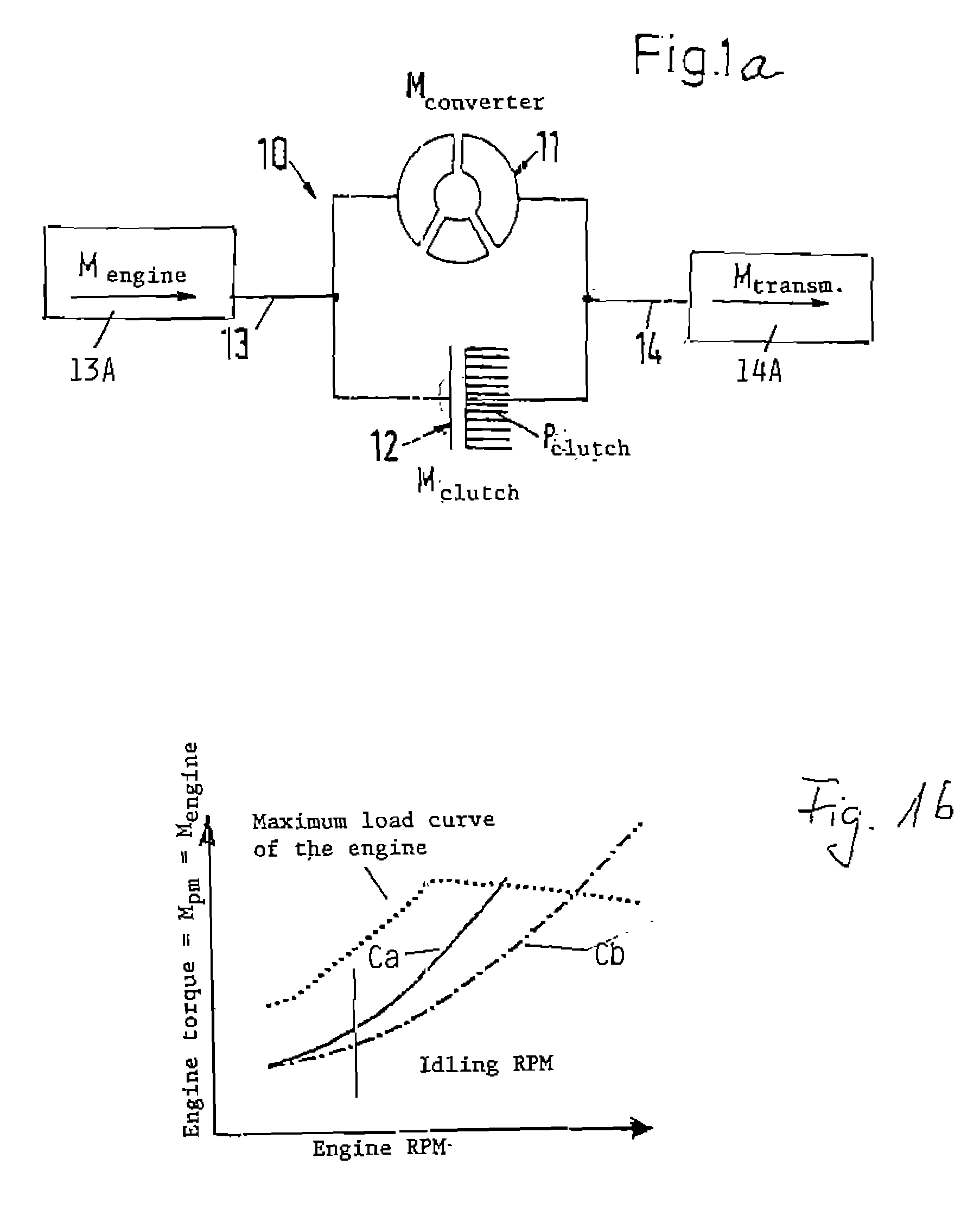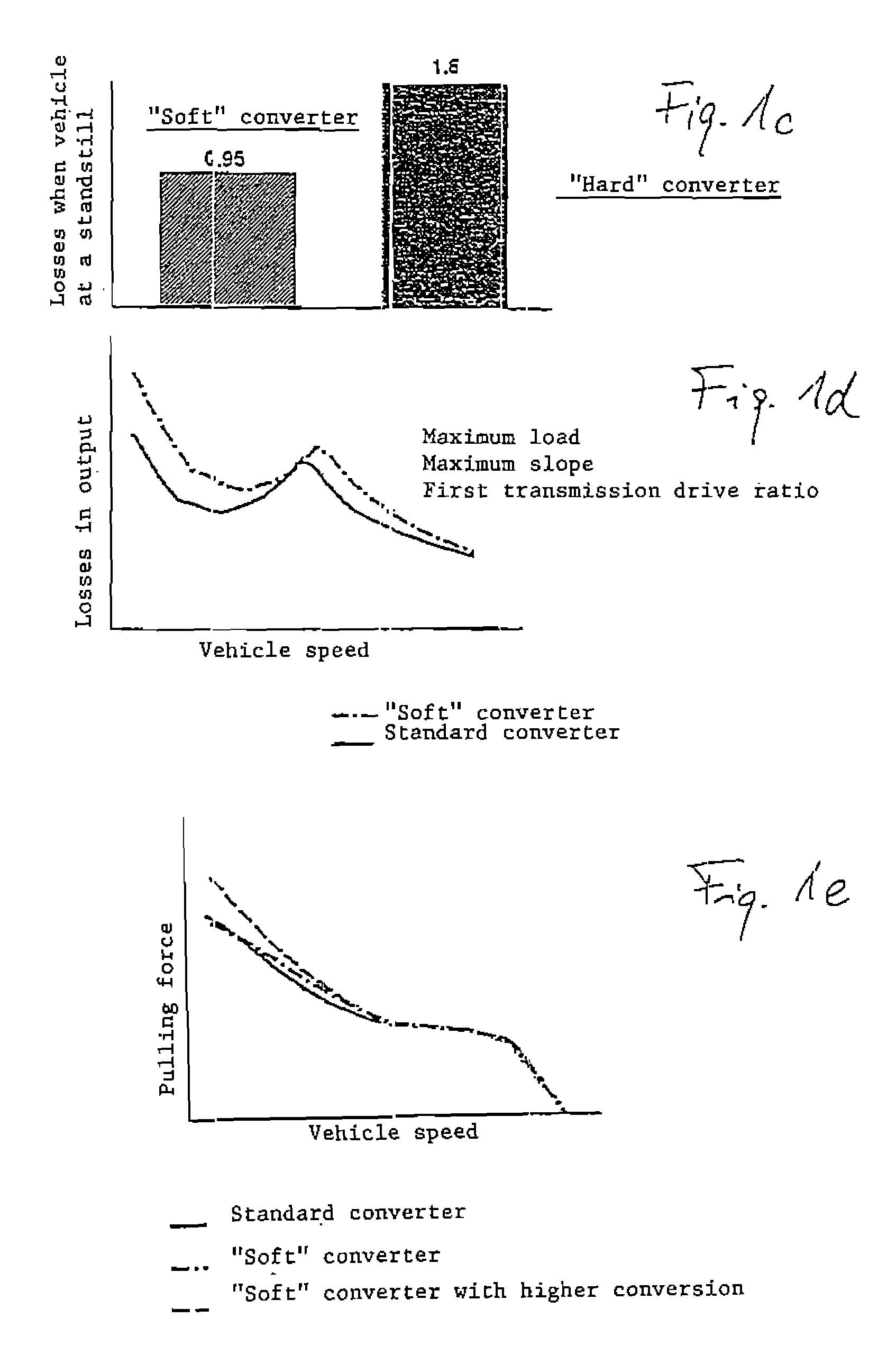Such post-mortem regulation exhibits a number of serious drawbacks because a correction of the departure of actually ascertained unsatisfactory pressure differential from the desired or optimal pressure differential invariably takes place with a certain
delay.
The aforediscussed drawbacks of the proposals by Hiramatsu, Cowan et al. and Niikura et al. are believed to be the reason that such proposals failed to
gain widespread acceptance in the relevant industries.
Delayed adjustments to correct already existing unsatisfactory transmission of torque from a
prime mover to a driven unit in the power
train of a motor vehicle are particularly undesirable and deleterious in dynamic processes because the adjustments are not compatible with one or more aspects of a dynamic process.
Another reason that the aforedescribed conventional proposals to regulate the transmission of torque failed to
gain acceptance in the automobile and related industries is that a vehicle is often put to use under circumstances when a time-dependent or time-optimized operation of the
torque transmission regulating
system is not desirable.
The slip of the lockup clutch increases in response to a reduction of the RPM of the output of the torque transmitting
system which, however, in turn necessitates (due to the characteristics of the hydrokinetic torque converter) an increase of the slip of the lockup clutch.
However, the driving unit is not in a condition to supply a higher torque under the just outlined circumstances of use of the torque transmitting apparatus in a motor vehicle.
A drawback of the proposal of Sekine et al. is that the magnitude of torque which is being transmitted by the lockup clutch is a function of the position or setting of the
throttle valve as well as a function of several other variable parameters including the
friction coefficient of the friction lining(s) on the
piston of the lockup clutch and / or on the adjacent portion of the housing of the hydrokinetic torque converter.
Such apparatus fail to ensure any savings or any appreciable savings in fuel consumption, i.e., the savings in fuel consumption are not more satisfactory than when the
combustion engine of a motor vehicle drives a torque transmitting apparatus which does not embody a lockup clutch or bypass clutch.
Other known attempts to regulate the slip of a lockup clutch, even at 50 RPM and less, have also failed to meet the exacting standards in the automobile making and related industries.
In other words, when the rigidity or stability of the
piston is relatively low, the application of a force in a direction to engage such lockup clutch cannot ensure uniform distribution of pressures between the entire friction face of the
piston and the entire friction face of the adjacent portion of the housing of the torque converter.
This can result in partial overheating of the fluid (such as oil and known as ATF=
automatic transmission fluid) which fills the housing of the torque converter and forms two at least partially separated fluid bodies at opposite sides of the piston.
Attempts to overcome such drawbacks by increasing the area of the friction face of the piston and / or the adjacent portion of the housing have met with limited success because the space which is available for the installation of a torque transmitting apparatus in the power train of a motor vehicle is normally limited, especially as seen in the radial direction of the torque converter and the associated lockup clutch.
Similar problems arise if the dimensions of the torque transmitting apparatus are to be increased in the axial direction of the torque converter.
Attempts to employ one or more torsional dampers which are to absorb fluctuations of torque between the piston of the lockup clutch and the
turbine of the torque converter and which are installed at a considerable radial distance from the axis of the torque converter are equally unsatisfactory, particularly in view of the large
space requirements of such dampers.
As a rule, dampers are used to counteract the aforediscussed drawbacks of all or nearly all conventional
torque transmission regulating systems, namely that such systems are incapable of adequately regulating the slip of a lockup clutch at rotational speeds of the output element of the
prime mover which are close to or less than fifty.
 Login to View More
Login to View More  Login to View More
Login to View More 


